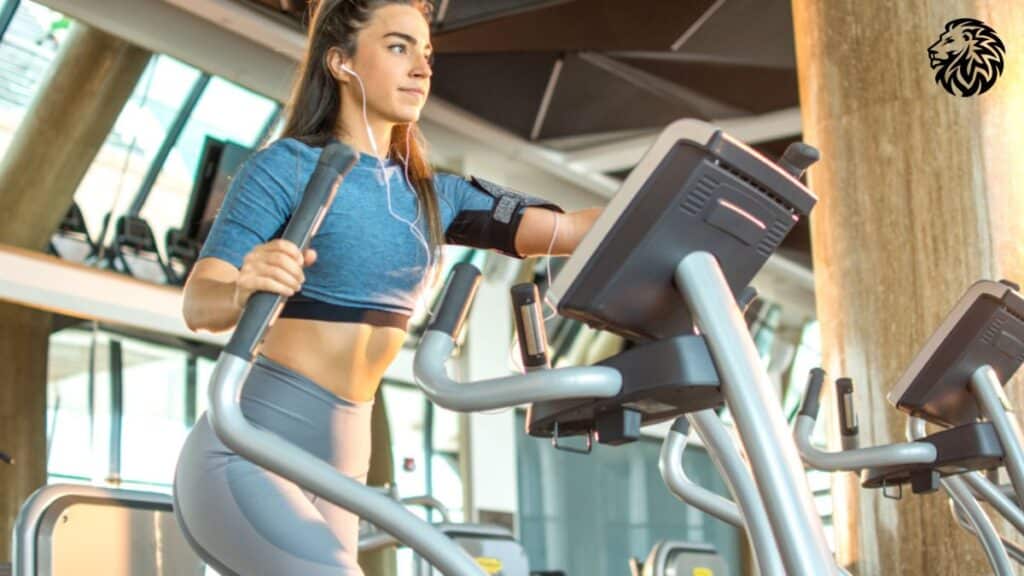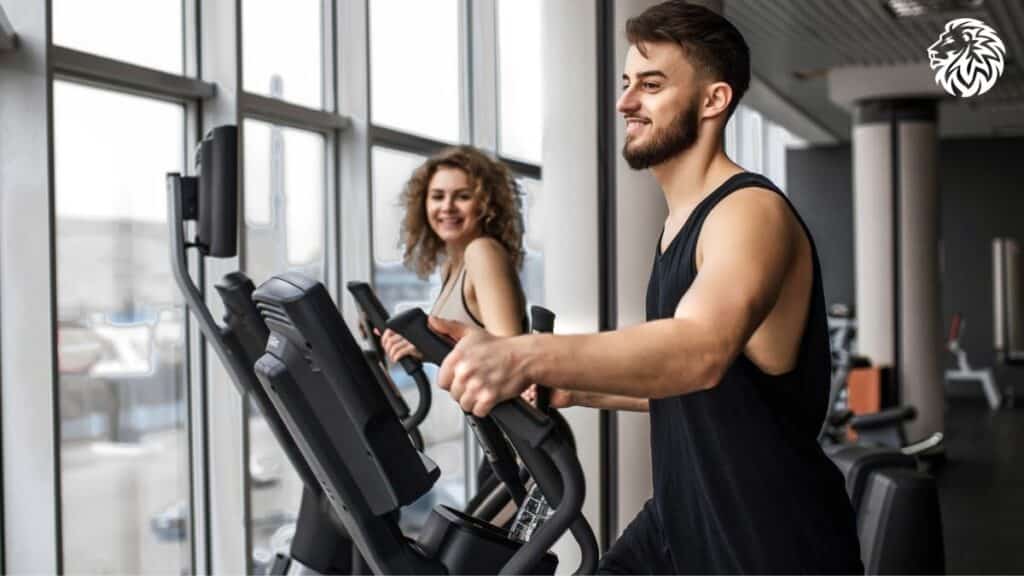Choosing the right exercise routine is crucial for achieving fitness goals and maintaining overall health. With a myriad of options available, it often becomes overwhelming to decide which workout is best suited for one’s individual needs and lifestyle. Among the popular choices are walking, a natural and straightforward activity, and using an elliptical trainer, a staple in many gyms and homes.
In this article, we aim to shed light on the benefits, suitability, and effectiveness of walking and elliptical exercises. By comparing these two forms of physical activity, we hope to provide valuable insights that will help you determine which exercise aligns best with your personal health goals, fitness level, and preferences. Whether you’re looking to lose weight, improve cardiovascular health, or simply find a sustainable workout routine, understanding the nuances of these exercises is key to making an informed decision.
Overview of Walking

Walking is one of the most fundamental and accessible forms of exercise. It requires no special equipment and can be done virtually anywhere, from city parks to country trails. As a low-impact activity, it is gentle on the joints, making it a suitable option for people of all ages and fitness levels.
Health Benefits of Walking
- Cardiovascular Health: Regular walking helps strengthen the heart and improve circulation.
- Weight Management: It aids in burning calories and managing body weight.
- Mental Health: Walking, especially in nature, can reduce stress and improve mood.
- Muscle Strength and Endurance: It helps tone the leg muscles and build endurance.
- Bone Health: Being a weight-bearing exercise, walking can improve bone density.
- Improved Balance and Coordination: Regular walks can enhance proprioception (body awareness), reducing the risk of falls, particularly in the elderly.
Types of Walking
- Casual Walking: A gentle, leisurely walk, suitable for all fitness levels.
- Brisk Walking: A faster pace, aiming for a moderate-intensity level, great for cardiovascular fitness.
- Power Walking: An intense form of walking with a focus on speed and arm movement, beneficial for both cardio and muscle toning.
- Hiking: Walking in natural terrains like hills or mountains, which can be more challenging and offers a full-body workout.
- Nordic Walking: Involves walking with special poles, providing an upper body workout along with the benefits of regular walking.
Suitability Across Ages and Fitness Levels
Walking’s simplicity and adaptability make it an ideal exercise for everyone. For beginners, the elderly, or those with certain health conditions, a gentle stroll can be a great start to becoming more active. For more advanced fitness enthusiasts, brisk or power walking provides a more challenging cardiovascular workout. Children and adolescents can benefit from the habitual incorporation of walking into their routines, fostering a foundation for lifelong fitness. Moreover, walking can easily be integrated into daily life, making it a practical choice for maintaining regular physical activity.
Overview of Elliptical Training

Elliptical training involves using an elliptical machine, a stationary exercise device that simulates walking, running, or stair climbing without causing excessive pressure on the joints. This low-impact workout option has gained popularity in both home gyms and fitness centers. The machine typically features pedals and handlebars; the combined action of pedaling and pushing/pulling the handlebars provides a full-body cardiovascular workout.
How Elliptical Training Works
- Simulated Motion: The elliptical machine creates a smooth, continuous movement that mimics natural walking or running, but with reduced impact on the knees, hips, and back.
- Full-Body Engagement: The handlebars work in conjunction with the pedals, engaging the upper body along with the lower body, unlike traditional treadmills or stationary bikes.
Health Benefits of Using an Elliptical
- Cardiovascular Fitness: It effectively raises the heart rate, improving heart health and endurance.
- Low-Impact Workout: Ideal for individuals with joint issues or recovering from injuries.
- Weight Loss: High calorie burn potential makes it effective for weight loss and management.
- Muscle Strengthening and Toning: Targets multiple muscle groups including legs, arms, and core.
- Improved Balance and Coordination: The need to maintain posture while in motion helps improve overall balance.
Variations in Elliptical Workouts
- Resistance Levels: Most ellipticals allow users to adjust resistance, making the workout easier or harder.
- Incline Settings: Changing the incline alters the emphasis on different muscle groups, similar to going uphill.
- Pre-programmed Workouts: Many machines offer varied workout programs, simulating different terrain and challenges.
- Stride Length: Some machines have adjustable stride lengths to accommodate different user heights and preferences.
Suitability for Different Age Groups and Fitness Levels
Elliptical trainers are suitable for a wide range of fitness levels and age groups. They are particularly beneficial for middle-aged and older adults seeking a low-impact exercise option. For fitness enthusiasts, the adjustable resistance and incline settings provide a challenging workout. Beginners can start with low resistance and gradually increase intensity. It’s also a safe option for those with certain health conditions who need to avoid high-impact activities. The elliptical can be an excellent tool for cross-training, offering a respite from the high-impact nature of activities like running or intense aerobics.
Comparison of Walking and Elliptical Training

When choosing between walking and elliptical training, understanding how they compare in key aspects such as calorie burn, cardiovascular benefits, impact on joints, muscle engagement, and convenience can help in making an informed decision.
Calorie Burn and Cardiovascular Benefits
- Walking: The number of calories burned while walking depends on pace, terrain, and body weight. Brisk walking can effectively improve heart health and endurance.
- Elliptical Training: Generally, elliptical training burns more calories than walking due to the potential for higher intensity and the involvement of more muscle groups. It offers excellent cardiovascular benefits, similar to walking, but often in a shorter time frame.
Impact on Joints and Risk of Injury
- Walking: Being a low-impact exercise, walking is gentle on the joints. However, walking on hard surfaces or uneven terrain can sometimes lead to joint strain or minor injuries.
- Elliptical Training: The elliptical provides an even lower impact on the joints than walking. Its smooth, gliding motion reduces the risk of impact-related injuries, making it ideal for those with joint issues or recovering from injuries.
Muscle Groups Targeted
- Walking: Primarily targets the lower body – calves, hamstrings, quadriceps, and glutes. Inclined or brisk walking can engage these muscles more intensely.
- Elliptical Training: Offers a full-body workout. While it also works the lower body muscles, the addition of handlebars engages the upper body, including arms, chest, and back, providing a more comprehensive muscle workout.
Convenience and Accessibility
- Walking: Walking scores high on convenience. It requires no special equipment and can be done almost anywhere.
- Elliptical Training: Requires access to an elliptical machine, which could be a limitation for some. While it’s an excellent option for gym-goers or those with home equipment, it’s less accessible compared to walking.
Considerations for Choosing Between Walking and Elliptical

Deciding whether to opt for walking or elliptical training should be based on individual fitness goals, health considerations, accessibility, cost factors, and personal preferences. Here are some key considerations to help make this choice:
Personal Fitness Goals
- Weight Loss: If calorie burn is a priority, elliptical training might be more effective due to its potential for higher intensity workouts. However, a brisk walking routine can also aid in weight loss.
- Building Endurance: Both walking, especially brisk or power walking, and elliptical training are excellent for building cardiovascular endurance.
- Muscle Toning: For more comprehensive muscle engagement, including the upper body, elliptical training is preferable. Walking primarily targets the lower body.
Existing Health Conditions and Injury Considerations
- Joint or Mobility Issues: Individuals with joint problems or recovering from injuries may find the low-impact nature of elliptical training more comfortable and safer.
- Heart Conditions: Both exercises are good for heart health, but it’s important to choose the intensity level appropriate to one’s health status.
Accessibility and Cost
- Equipment and Location: Walking requires no special equipment and can be done anywhere, making it highly accessible. In contrast, elliptical training requires access to the machine, which might involve gym membership fees or the cost of home equipment.
- Space Considerations: For those with limited space at home, walking outdoors is a more feasible option than housing an elliptical machine.
Personal Preference and Routine Sustainability
- Enjoyment Factor: Personal enjoyment is crucial. If you enjoy the workout, you’re more likely to stick with it long-term.
- Variety in Workout: Some may prefer the versatility and changing scenery of walking, while others might find the features and challenges of an elliptical workout more engaging.
- Convenience: The ease of slipping into a walking routine without needing special equipment or a trip to the gym can be a significant factor for many.
Conclusion
In this article, we’ve explored the distinct characteristics and benefits of both walking and elliptical training, each offering unique advantages for fitness and health. Walking stands out for its simplicity, accessibility, and the gentle impact on joints, making it ideal for a broad range of individuals. On the other hand, elliptical training is notable for its ability to provide a more intense workout with higher calorie burn and full-body muscle engagement, all while being low-impact.
The choice between walking and elliptical training should be guided by personal fitness goals, health considerations, accessibility, cost, and personal preferences. Whether your aim is weight loss, improving cardiovascular health, muscle toning, or accommodating specific health conditions, both forms of exercise offer valuable benefits:
- Walking: A natural, convenient option that can be easily incorporated into daily life.
- Elliptical Training: A more intense, low-impact workout suitable for those looking to maximize calorie burn and muscle engagement.
It’s important to recognize that fitness is a personal journey, and what works best for one individual may not be the ideal choice for another. We encourage our readers to experiment with both walking and elliptical training to see which resonates more with their lifestyle, preferences, and fitness goals. Ultimately, the best workout is one that you enjoy and can maintain consistently, contributing to your overall health and well-being.
Frequently Asked Questions
- Q: Can walking or elliptical training be effective for weight loss?
- A: Yes, both walking and elliptical training can be effective for weight loss. Walking, especially brisk walking, burns calories and improves metabolism, while elliptical training often burns more calories in a shorter period due to its higher intensity and full-body engagement.
- Q: Is elliptical training suitable for seniors or those with joint issues?
- A: Absolutely. Elliptical training is particularly beneficial for seniors and individuals with joint issues due to its low-impact nature, reducing stress on knees, hips, and back, making it a safer and more comfortable workout option.
- Q: How much time should I spend on the elliptical to equal a brisk 30-minute walk?
- A: It depends on the intensity of your elliptical workout. Generally, a 20-minute session on an elliptical at moderate to high intensity can be equivalent to a brisk 30-minute walk, but this can vary based on individual effort and fitness levels.
- Q: Can walking provide a full-body workout like the elliptical?
- A: While walking primarily targets the lower body, incorporating arm movements or using walking poles can engage the upper body, though it typically does not provide as comprehensive a full-body workout as elliptical training.
- Q: Is it better to walk outdoors or use an elliptical indoors for cardiovascular health?
- A: Both walking outdoors and using an elliptical indoors are excellent for cardiovascular health. The choice should depend on personal preference, convenience, weather conditions, and accessibility to an elliptical machine. Variety in your workout routine can also enhance cardiovascular benefits.







